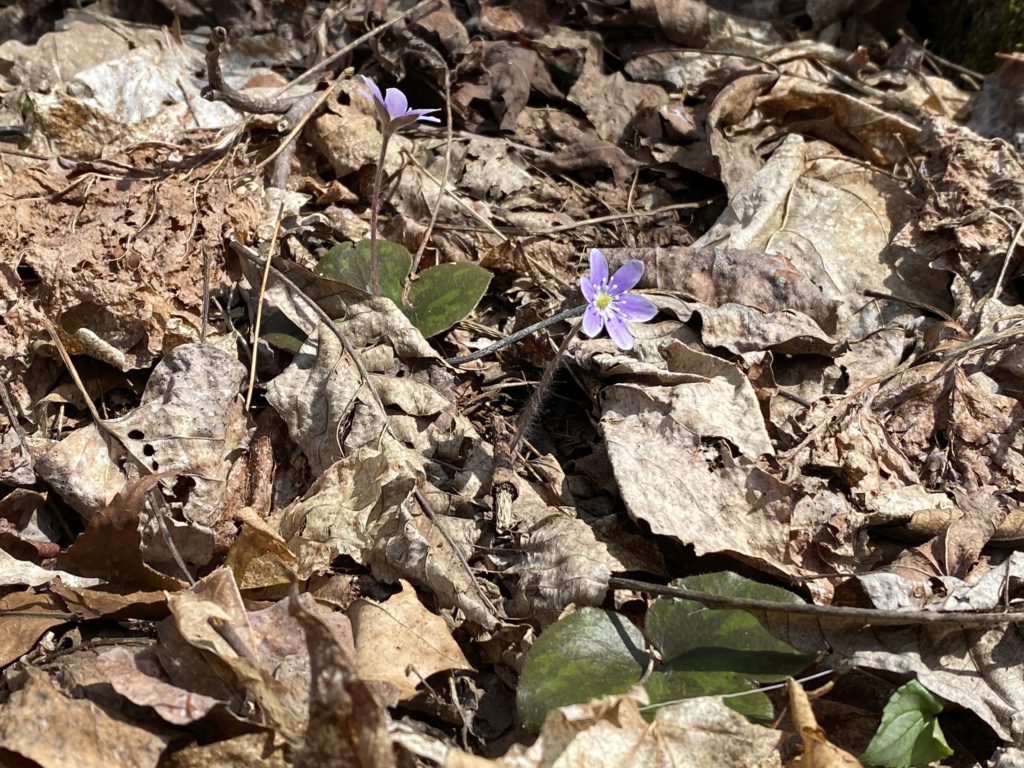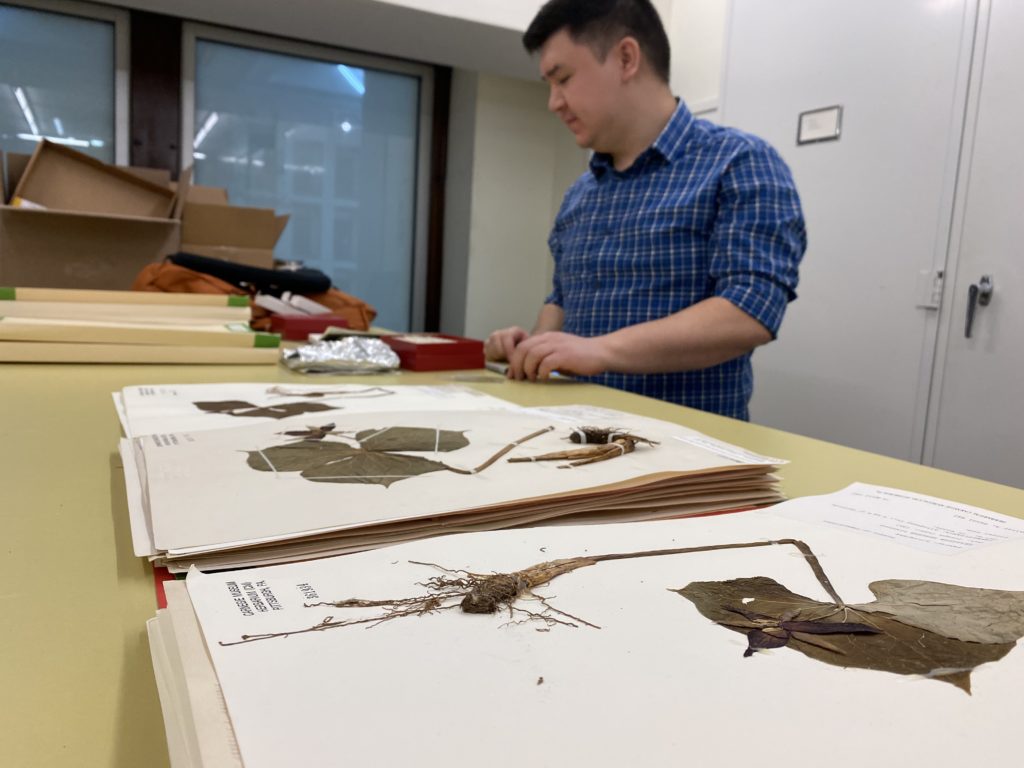Adverse Effects to Spring Ephemerals May Be Greater in North America than in Asia and Europe
Research Underscores Increased Importance of Digitized Museum Collections and Herbaria

Botanists from Carnegie Museum of Natural History and an international team of researchers warn of risks posed to North American ephemeral wildflowers caused by warmer spring temperatures in a recent study published in Nature Communications. Researchers surveyed data from 5,522 individual herbarium specimens collected from 1901 to 2020, representing 40 species from Asia, Europe, and North America, to analyze the phenological mismatch—or discrepancies in timing—between the leaf-out periods for understory ephemerals and deciduous canopy trees. The specimens show that sensitivity to spring temperature for wildflowers occurs across the three continents, but that canopy trees in North America are significantly more sensitive to spring temperatures and experience longer springs when compared to trees in Asia and Europe. This dynamic results in shorter spring light windows for North American wildflowers.
The threat compounds the documented human-caused risks facing North American wildflowers, which include increased deer herbivory, habitat loss, pollinator declines, and nutrient pollution. The phenological dynamic is important because wildflowers in deciduous forests often rely on leafing out before the canopy to create 50-100% of their annual carbon budget, which lead author and Carnegie Museum of Natural History postdoctoral research associate Dr. Benjamin Lee describes “as if a person were to eat all the calories they needed for a year in the first three weeks.” This strategy directly corresponds with wildflowers’ growth, survival, flowering, and reproductive output. The understory layer accounts for about 80% of plant species diversity in temperate forests worldwide and provides a critical role in the functioning of these ecosystems.
“Part of the novelty of this study is that it is one of the first to use herbarium specimens for intercontinental comparisons,” said Dr. Lee. “Our unexpected results, with North American wildflowers being substantially more at risk to climate change effects than wildflowers in Europe and Asia, highlight how important it is that this intercontinental research is conducted and how valuable herbarium collections are in this endeavor.”

The researchers call for additional study that will include specimens from international herbaria and research collaborations to assist conservation efforts.
The study’s authors include Dr. Lee, Dr. Tara K. Miller of Boston University, Dr. Christoph Rosche of Germany’s Martin Luther University, Dr. Yong Yang of China’s Nanjing Forestry University, Dr. Mason Heberling of Carnegie Museum of Natural History, Dr. Sara E. Kuebbing of Yale University, and Dr. Richard B. Primack of Yale University.
